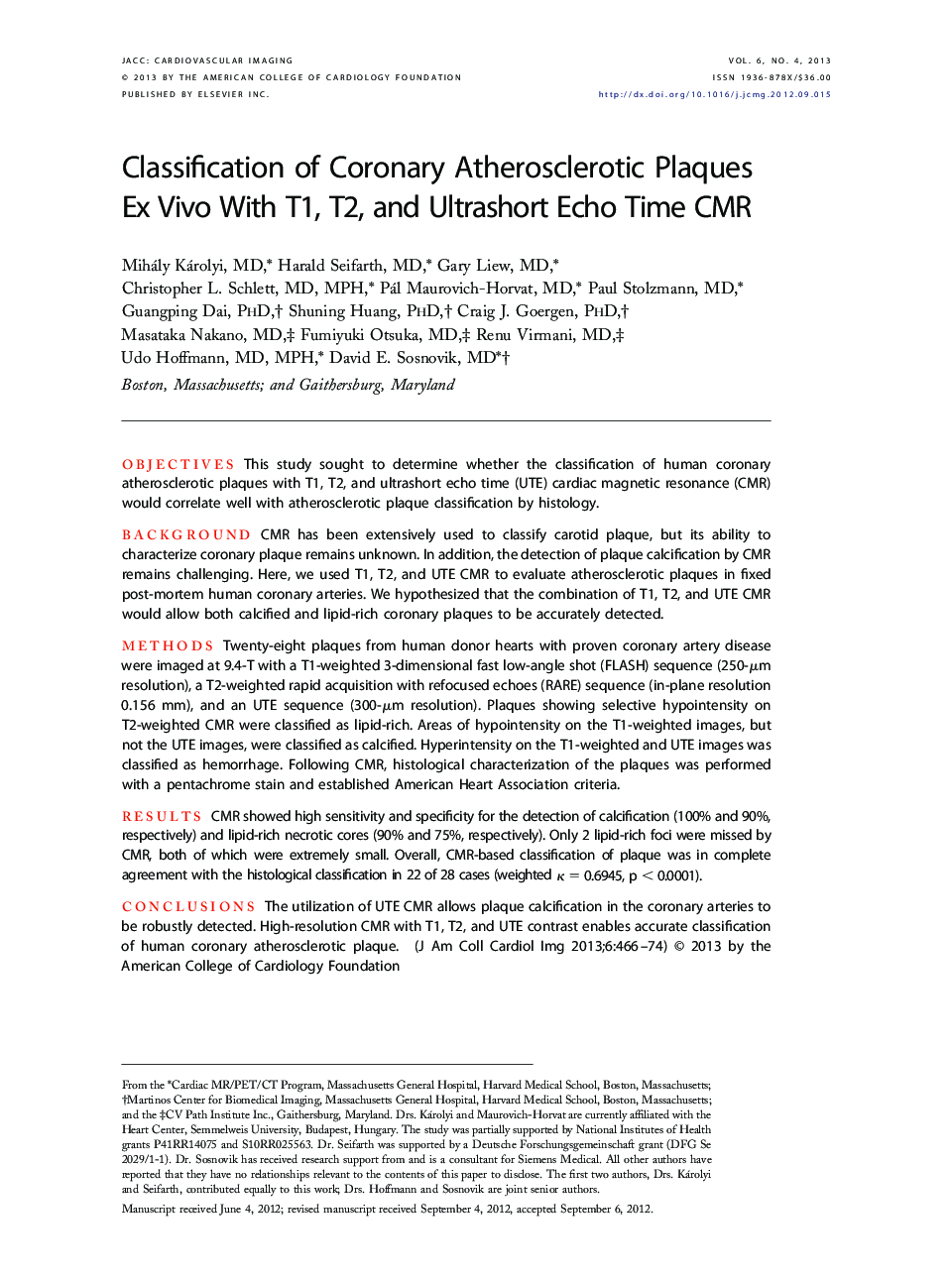| کد مقاله | کد نشریه | سال انتشار | مقاله انگلیسی | نسخه تمام متن |
|---|---|---|---|---|
| 2938232 | 1176929 | 2013 | 9 صفحه PDF | دانلود رایگان |

ObjectivesThis study sought to determine whether the classification of human coronary atherosclerotic plaques with T1, T2, and ultrashort echo time (UTE) cardiac magnetic resonance (CMR) would correlate well with atherosclerotic plaque classification by histology.BackgroundCMR has been extensively used to classify carotid plaque, but its ability to characterize coronary plaque remains unknown. In addition, the detection of plaque calcification by CMR remains challenging. Here, we used T1, T2, and UTE CMR to evaluate atherosclerotic plaques in fixed post-mortem human coronary arteries. We hypothesized that the combination of T1, T2, and UTE CMR would allow both calcified and lipid-rich coronary plaques to be accurately detected.MethodsTwenty-eight plaques from human donor hearts with proven coronary artery disease were imaged at 9.4-T with a T1-weighted 3-dimensional fast low-angle shot (FLASH) sequence (250-μm resolution), a T2-weighted rapid acquisition with refocused echoes (RARE) sequence (in-plane resolution 0.156 mm), and an UTE sequence (300-μm resolution). Plaques showing selective hypointensity on T2-weighted CMR were classified as lipid-rich. Areas of hypointensity on the T1-weighted images, but not the UTE images, were classified as calcified. Hyperintensity on the T1-weighted and UTE images was classified as hemorrhage. Following CMR, histological characterization of the plaques was performed with a pentachrome stain and established American Heart Association criteria.ResultsCMR showed high sensitivity and specificity for the detection of calcification (100% and 90%, respectively) and lipid-rich necrotic cores (90% and 75%, respectively). Only 2 lipid-rich foci were missed by CMR, both of which were extremely small. Overall, CMR-based classification of plaque was in complete agreement with the histological classification in 22 of 28 cases (weighted κ = 0.6945, p < 0.0001).ConclusionsThe utilization of UTE CMR allows plaque calcification in the coronary arteries to be robustly detected. High-resolution CMR with T1, T2, and UTE contrast enables accurate classification of human coronary atherosclerotic plaque.
Journal: JACC: Cardiovascular Imaging - Volume 6, Issue 4, April 2013, Pages 466–474